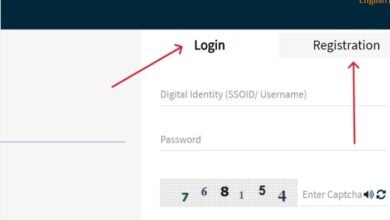Mastering Pay-Per-Click Advertising: Key Takeaways for Success

Pay-Per-Click (PPC) advertising has become a cornerstone of digital marketing strategies for businesses of all sizes. Whether you’re a business owner looking to boost your brand’s online presence, a marketing professional aiming to refine your approach, or an AI expert interested in the latest PPC trends, understanding the intricacies of PPC can provide significant advantages. This blog post delves into critical takeaways from pay per click advertising, offering actionable insights and strategies to help you master this powerful marketing tool.
Understanding the Basics of PPC Advertising
Before diving into advanced strategies, it’s essential to grasp the fundamentals of PPC advertising. At its core, PPC is an online advertising model where advertisers pay each time a user clicks on their ad. These ads typically appear on search engines like Google, Bing, and social media platforms such as Facebook and LinkedIn.
What Makes PPC Effective?
The effectiveness of PPC lies in its precision and immediacy. Unlike organic search engine optimization (SEO), which can take months to show results, PPC campaigns can drive traffic to your site almost instantly. Moreover, PPC allows for highly targeted advertising, enabling you to reach specific demographics based on factors such as location, interests, and online behaviors.
Example: Google Ads
Consider Google Ads, one of the most popular PPC platforms. Users bid on keywords relevant to their business, and when someone searches for those keywords, their ad appears at the top of the search results. The advertiser only pays when the ad is clicked. This model ensures that your advertising budget is spent on users genuinely interested in your offerings.
Steps to Get Started
- Choose a PPC Platform: Google Ads is a great starting point due to its widespread use and robust features.
- Keyword Research: Use tools like Google’s Keyword Planner to identify relevant keywords with high search volume and low competition.
- Create Compelling Ads: Craft ads with strong headlines, concise descriptions, and clear calls-to-action (CTAs) to entice users to click.
- Set a Budget: Determine your daily or monthly budget based on your overall marketing strategy and financial capacity.
- Launch and Monitor: Start your campaign and continuously monitor its performance, making adjustments as necessary.
Effective Keyword Research
Keyword research is the foundation of any successful PPC campaign. It involves identifying the search terms your target audience uses and bidding on those keywords to ensure your ads appear when potential customers search for related products or services.
Tools for Keyword Research
Several tools can help streamline the keyword research process:
- Google Keyword Planner: Provides insights into keyword search volumes, competition levels, and suggested bids.
- SEMrush: Offers comprehensive keyword analytics, including competitor keywords and keyword difficulty scores.
- Ahrefs: Known for its extensive backlink database, Ahrefs also provides valuable keyword research capabilities.
Example: Long-Tail Keywords
Long-tail keywords are longer and more specific phrases that typically have lower search volumes but higher conversion rates. For example, instead of bidding on a broad keyword like “shoes,” a long-tail keyword would be “women’s running shoes with arch support.” Bidding on long-tail keywords can reduce competition and cost-per-click (CPC) while increasing the likelihood of attracting highly targeted traffic.
Steps for Effective Keyword Research
- Brainstorm Initial Keywords: Start with a list of basic keywords relevant to your business.
- Expand with Tools: Use keyword research tools to generate additional keyword ideas.
- Analyze and Filter: Evaluate the search volume, competition, and relevance of each keyword. Focus on those with high relevance and manageable competition.
- Group Keywords: Organize keywords into ad groups based on common themes to ensure your ads are closely aligned with search queries.
Crafting Compelling Ad Copy
The quality of your ad copy can significantly impact your PPC campaign’s success. According to a top pay-per-click agency, well-crafted ads not only attract clicks but also drive conversions by clearly communicating value propositions and motivating users to take action.
Components of Effective Ad Copy
- Headline: Grab attention with a compelling and relevant headline. Example: “Save 20% on Premium Running Shoes.”
- Description: Provide additional details and emphasize benefits. Example: “Discover our top-rated running shoes designed for comfort and performance. Shop now and save!”
- Call-to-Action (CTA): Encourage immediate action with a clear CTA. Example: “Shop Now,” “Learn More,” or “Get Started.”
Example: A/B Testing
A/B testing involves creating multiple versions of an ad to determine which performs better. For instance, you might test two different headlines to see which generates more clicks. By systematically testing and refining your ads, you can optimize your campaign for maximum effectiveness.
Steps to Write Effective Ad Copy
- Understand Your Audience: Know who you are targeting and what appeals to them.
- Highlight Unique Selling Points (USPs): Clearly communicate what sets your product or service apart.
- Use Emotional Triggers: Appeal to emotions such as fear, excitement, or curiosity to capture attention.
- Keep It Simple and Direct: Ensure your message is easy to understand and free of jargon.
- Incorporate Keywords: Include relevant keywords in your ad copy to improve relevance and Quality Score.
Optimizing Landing Pages
A well-optimized landing page is crucial for converting PPC traffic into leads or sales. The landing page should deliver on the promises made in your ad and provide a seamless user experience.
Key Elements of a High-Converting Landing Page
- Clear Headline: Your headline should immediately convey the value proposition and relate to the ad copy.
- Concise and Persuasive Content: Provide relevant information in a clear and engaging manner.
- Strong Visuals: Use high-quality images or videos to enhance the appeal.
- Prominent CTA: Ensure your CTA is easy to find and compelling. Example: “Sign Up Now,” “Get Your Free Quote,” or “Download the Guide.”
- Trust Signals: Include testimonials, reviews, or trust badges to build credibility and trust.
Example: Conversion Rate Optimization (CRO)
Conversion Rate Optimization (CRO) involves making data-driven changes to your landing page to improve its effectiveness. For instance, if you notice a high bounce rate, you might test different headlines, rearrange content, or simplify the form fields to reduce friction.
Steps to Optimize Landing Pages
- Align with Ad Copy: Ensure that your landing page content closely matches the message and expectations set by your ad.
- Focus on User Experience (UX): Create a seamless and intuitive experience with fast loading times, mobile responsiveness, and easy navigation.
- Conduct A/B Testing: Test different elements of your landing page, such as headlines, images, and CTAs, to identify what works best.
- Analyze Performance Metrics: Use tools like Google Analytics to track key metrics such as bounce rate, average session duration, and conversion rate.
- Iterate and Improve: Continuously make adjustments based on data insights to enhance the effectiveness of your landing page.
Leveraging AI in PPC Campaigns
Artificial Intelligence (AI) is revolutionizing PPC advertising by automating and optimizing various aspects of campaign management. AI tools can analyze vast amounts of data, predict outcomes, and make real-time adjustments to improve campaign performance.
Benefits of AI in PPC
- Enhanced Targeting: AI algorithms can analyze user behavior and demographics to create highly targeted ad campaigns.
- Automated Bidding: AI can optimize bids in real-time to maximize ROI and ensure your ads get the best possible placement.
- Predictive Analytics: AI can forecast campaign performance and identify trends, allowing for proactive adjustments.
- Efficient Ad Creation: AI-powered tools can generate ad copy and creatives based on proven strategies and historical data.
Example: Google Smart Bidding
Google’s Smart Bidding uses machine learning to optimize bids for conversions or conversion value in every auction—a strategy known as “auction-time bidding.” For instance, Target CPA (Cost-Per-Acquisition) and Target ROAS (Return On Ad Spend) are Smart Bidding strategies that automate bid adjustments to achieve your desired outcomes.
Steps to Implement AI in PPC
- Choose the Right Tools: Identify AI-powered PPC tools that align with your campaign goals. Examples include Google Smart Bidding, Facebook’s Automated Ads, and AI copywriting tools like Jasper.
- Set Clear Objectives: Define specific goals for your AI-driven campaigns, such as increasing conversions or improving ROI.
- Integrate with Existing Platforms: Ensure your AI tools can seamlessly integrate with your current PPC platforms.
- Monitor and Adjust: While AI can automate many tasks, it’s essential to continuously monitor campaign performance and make manual adjustments as needed.
- Leverage Insights: Use the data and insights generated by AI tools to refine your overall PPC strategy and make informed decisions.
Measuring and Analyzing PPC Performance
Regularly measuring and analyzing your PPC campaign performance is vital to understanding its effectiveness and making informed decisions for future optimizations.
Key Performance Indicators (KPIs)
- Click-Through Rate (CTR): Measures the ratio of clicks to impressions. A higher CTR indicates that your ad is relevant and compelling.
- Cost-Per-Click (CPC): The average amount you pay for each click. Monitoring CPC helps manage your budget and optimize bids.
- Conversion Rate: The percentage of clicks that result in a desired action, such as a purchase or sign-up.
- Return On Ad Spend (ROAS): Measures the revenue generated for every dollar spent on advertising. A higher ROAS indicates a more profitable campaign.
- Quality Score: Google Ads’ metric that assesses the relevance and quality of your keywords, ads, and landing pages.
Example: Google Analytics
Google Analytics provides detailed insights into your PPC campaign performance. By setting up goals and tracking conversions, you can measure the effectiveness of your ads and landing pages, identify areas for improvement, and optimize your campaigns accordingly.
Steps to Measure and Analyze PPC Performance
- Set Up Conversion Tracking: Use tools like Google Analytics and Facebook Pixel to track conversions and gather data on user behavior.
- Define KPIs: Establish clear KPIs that align with your campaign objectives.
- Regular Reporting: Create regular reports to monitor key metrics and identify trends over time.
- Analyze Data: Dive deep into the data to uncover insights, such as high-performing keywords, ad variations, and audience segments.
- Make Data-Driven Decisions: Use the insights gained from your analysis to refine your PPC strategy and implement changes that drive better results.
Summing Up
Mastering Pay-Per-Click advertising requires a combination of strategic planning, continuous optimization, and leveraging advanced technologies like AI. By understanding the fundamentals, conducting effective keyword research, crafting compelling ad copy, optimizing landing pages, and utilizing AI tools, businesses can maximize the effectiveness of their PPC campaigns. Regularly measuring and analyzing performance ensures that your efforts are yielding the desired results and allows for ongoing improvements.
Whether you’re a business owner, marketing professional, or AI expert, these key takeaways provide a comprehensive guide to successfully navigating the world of PPC advertising. By applying these insights and strategies, you’ll be well-equipped to drive traffic, enhance engagement, and achieve your marketing goals.



